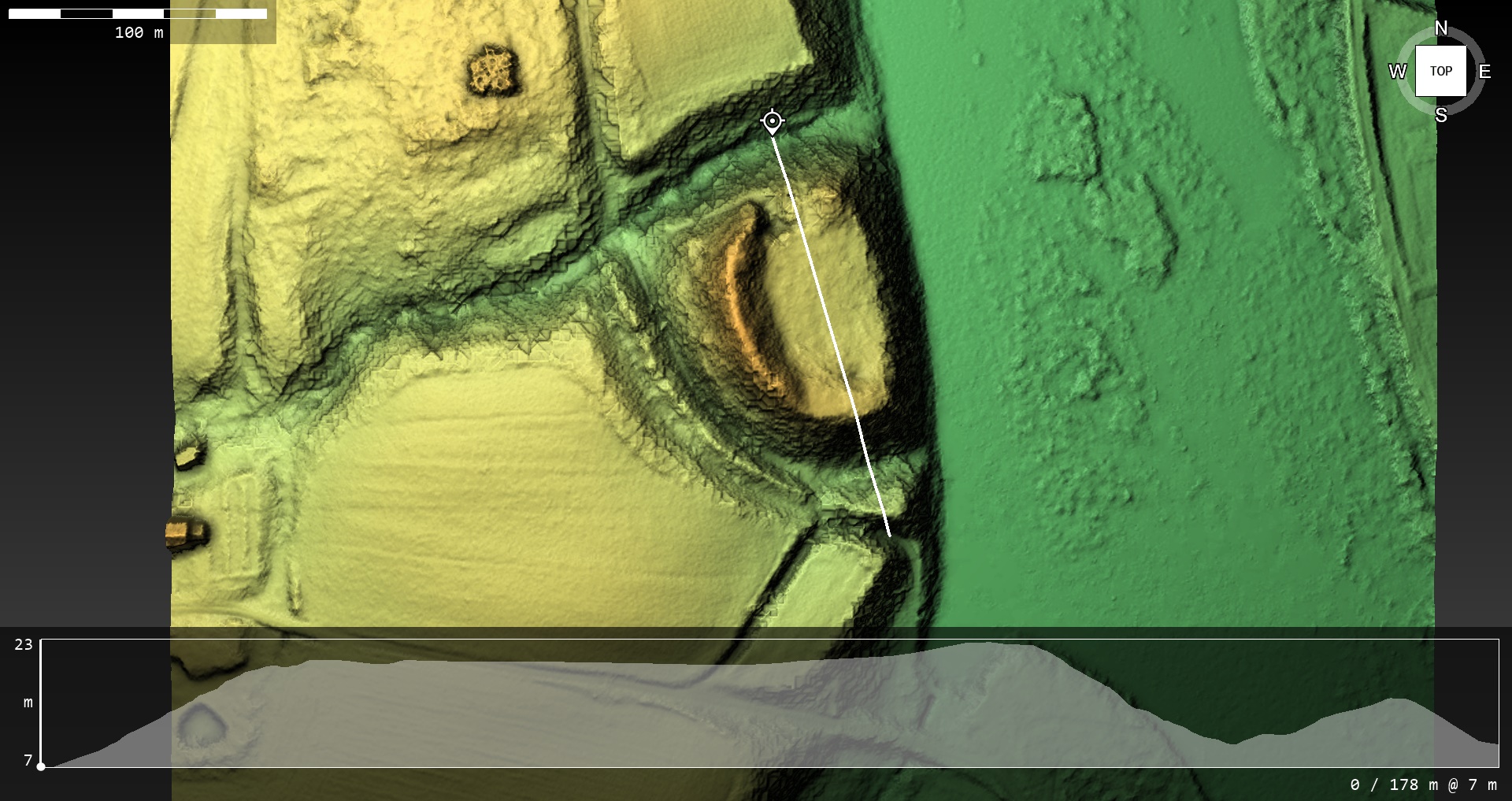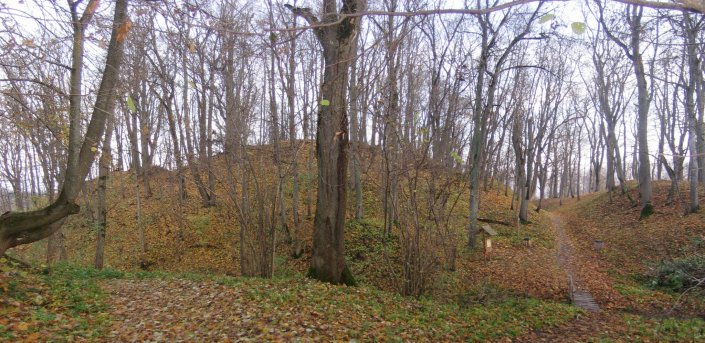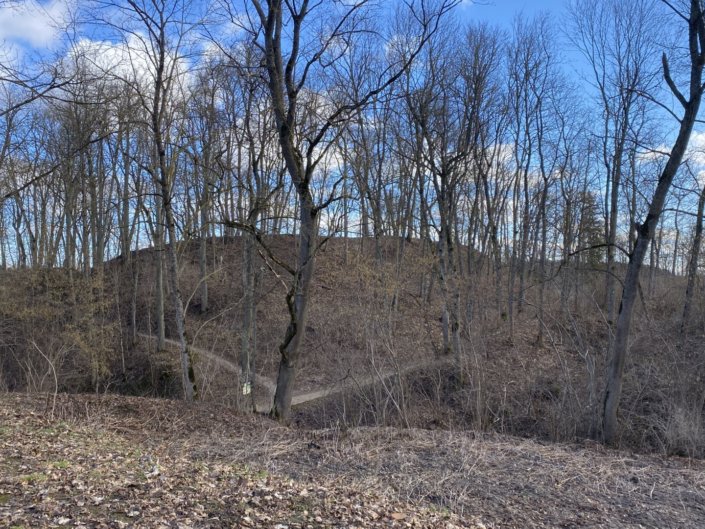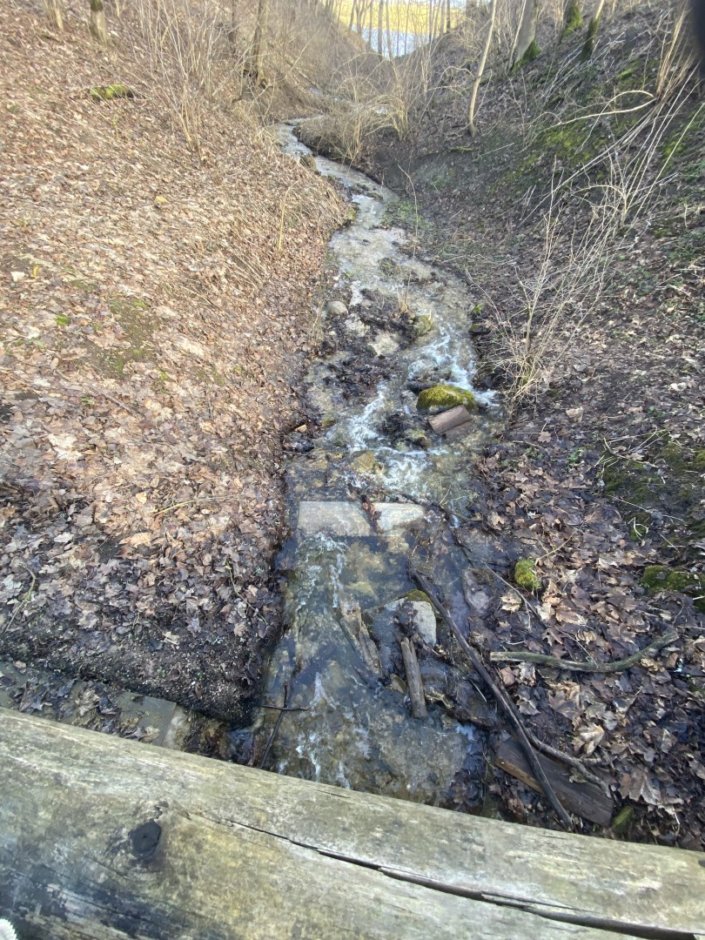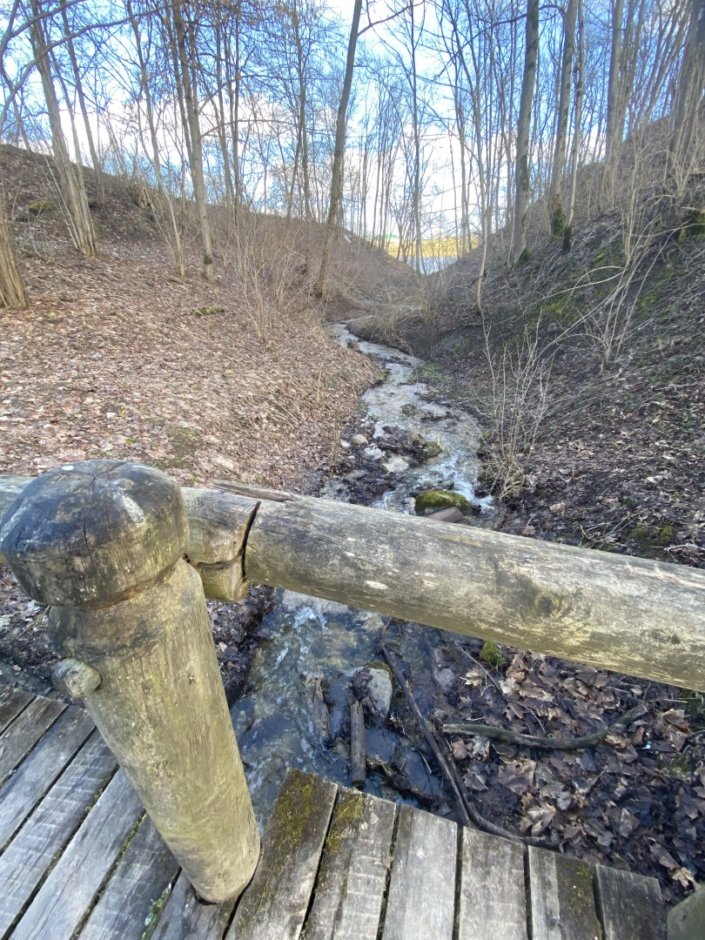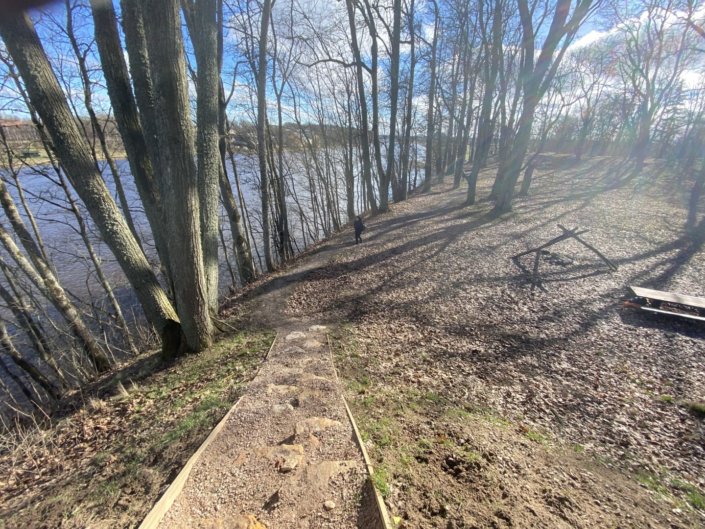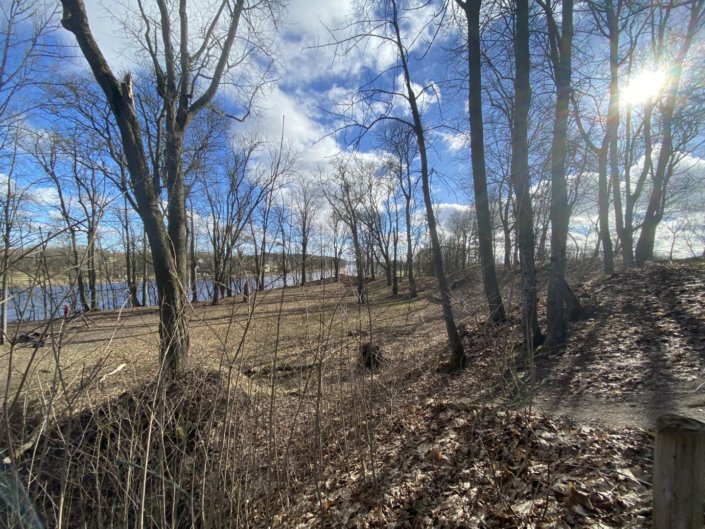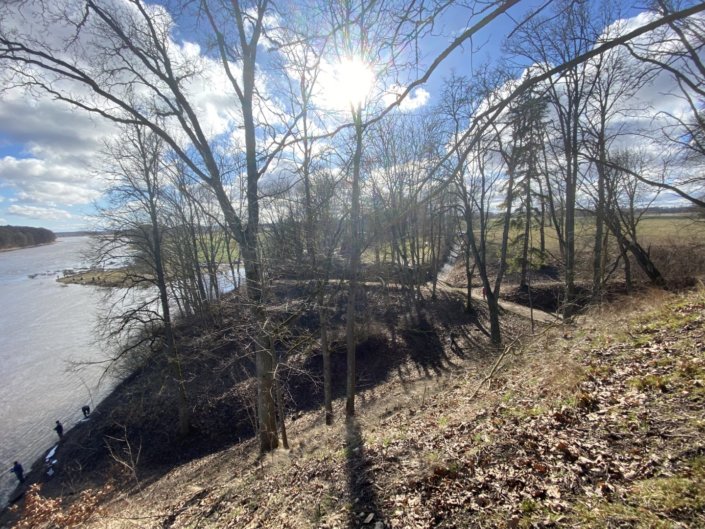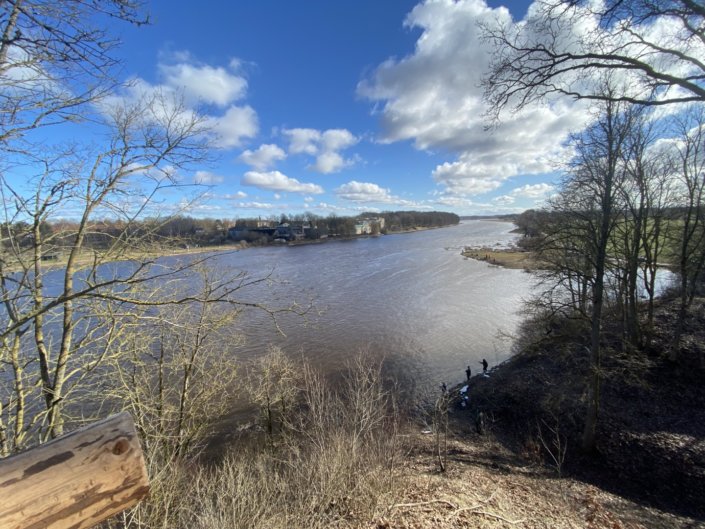
Survey scale 1:1000. Contour interval 1 m. Surveyed on July 20, 1923.
In Bauska county, across from Mežotne manor on the left bank of the Lielupe river, there stands the largest Zemgale fortification, known as hillfort.
It was constructed on a 16 m high steep bank of the Lielupe. On the northern side of the mound, there is a natural ravine with a tiny brook, but to the south and the west, it is fortified with artificial earthworks. The earthwork is 7 m high and the soil for it comes from the equally deep ditch next to it. The middle of this side is terraced after the erosion of the previous surface. Another earthwork and ditch lie beyond this main earthwork and ditch. This second earthwork is 2-4 m high and on the southern end is cut by a road which was built at a later time and follows the ditch between both earthworks, leading to the rectory.

Area plan. Scale 1:100.000.
The southern end of the main earthwork was flattened when a pavilion was built there.
The hilltop is level with a slight slope towards the river bank. A pit is located on the southern side near the earthwork, as is common in many hillforts. The ancient entrance can be seen at the northern edge of the earthwork. The cultural layer is relatively recent, with charcoal and wheel-thrown pottery sherds. The hillfort itself is not thought to be very old. Iron and bronze artefacts are often found in the vicinity. Some of them are stored in the collections of the War Museum in Riga.

Mežotne hillfort from the south-east.
Mežotne castle is mentioned in chronicles as a Semigallian fortress. Archaeologically this hillfort has not been studied and is lacking detailed historical descriptions. Bielenstein mentions it briefly in his “Die Grenzen”.
The following legend is told about the hillfort. Once upon a time, a woodcutter took a nap on the hillfort at midday. While sleeping, he heard someone moaning. Upon waking he did not find anyone nearby. Then he went back to sleep but the moaning got even louder. The third time a voice called from the underground: “Get off this spot, you are heavy! I sleep here because it is my place!” The woodcutter got scared and told the story to the priest. The priest said that it was no surprise because many had laid their bones in that place.
The hillfort is said to have a door where an underground passage begins that leads under the river to the Jumpravmuiža manor.
Mežotne hillfort with its surrounding area is listed as a state historical monument.
